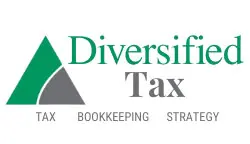Backup Withholding: What It Is and How It Works
Backup Withholding: What It Is and How It Works
Backup withholding is a critical mechanism enforced by the IRS, requiring the withholding of taxes at a rate of 24% on certain types of income to ensure accurate tax reporting and payment. This process comes into play mainly when income recipients fail to provide a correct Taxpayer Identification Number (TIN) or have underreported interest or dividends, safeguarding against tax evasion.
In navigating the complexities of backup withholding, this article aims to explain its fundamentals, identify the specific payments it applies to, and guide individuals on how to find out if they are subject to this withholding. Moreover, it will delve into strategies for preventing and resolving any issues related to backup withholding, providing an extensive understanding of this IRS mandate.
The Basics of Backup Withholding
Backup withholding is a tax mechanism implemented by the IRS to ensure the collection of taxes on certain types of income. This process mandates the payer of the income to withhold taxes at a predetermined rate directly from the payment, under specific conditions, before it reaches the payee. The primary goal is to capture taxes from income that might otherwise go unreported or underreported.
- Conditions Triggering Backup Withholding:
- The payee fails to provide a valid Taxpayer Identification Number (TIN).
- The IRS notifies the payer that the TIN provided by the payee is incorrect.
- The payee does not certify their exemption from backup withholding when required.
- The IRS notifies the payer to commence withholding due to the payee’s underreported interest or dividend income.
- Rates and Reporting:
- The backup withholding rate is set at 24% for U.S. citizens and resident aliens. For non-resident foreign persons, the rate is either 30% or 10%, depending on the income type.
- Payers must report the amount withheld using Form 1099 and remit the withheld taxes to the IRS through the Electronic Federal Tax Payment System (EFTPS).
- Preventing Backup Withholding:
- To avoid backup withholding, payees must ensure they provide accurate and up-to-date TINs.
- Respond promptly if the IRS notifies you of an incorrect TIN.
- Certify that you are not subject to backup withholding due to underreported income when necessary.
Backup withholding serves as a critical tool for the IRS to collect taxes efficiently on various income types, particularly when there is a risk of underreporting. It is essential for both payers and payees to understand the conditions that trigger backup withholding and the steps required to prevent it.
Payments Subject to Backup Withholding
Understanding the scope of backup withholding is essential for both payers and payees to ensure compliance with IRS regulations. The following outlines the types of payments subject to backup withholding, as well as those excluded, providing clarity on this complex subject.
Payments Subject to Backup Withholding:
- Interest Payments and Dividends: Includes any form of interest or dividend payments.
- Payment Card and Third-Party Network Transactions: Transactions processed through payment cards or third-party networks.
- Rents, Profits, and Commissions: Payments made for rents, profits earned, and commissions.
- Gambling Winnings: Includes winnings from gambling activities.
- Attorney’s Fees and Gross Proceeds: Payments made to attorneys or as gross proceeds.
- Independent Contractor Income: Payments for work done as an independent contractor.
- Broker and Fishing Boat Operator Payments: Includes payments made by brokers or barter exchanges and payments from fishing boat operators.
- Royalty Payments and Government Payments: Payments for royalties and certain government payments.
- Original Issue Discount (OID): Reportable on Form 1099-OID.
Payments Excluded from Backup Withholding:
- Real Estate Transactions: Including foreclosures and abandonments.
- Cancelled Debts: Payments classified as cancelled debts.
- Distributions from Retirement Accounts: Includes distributions from Archer MSAs and long-term care benefits.
Reporting and Compliance:
- Payments subject to backup withholding are reported using Forms 1099 and W-2G.
- If a contractor or investor fails to provide a correct TIN for payments reportable on Form 1099, the payer must withhold at a rate of 24%.
- Businesses paying freelancers more than $600 in a year must fill out a 1099-MISC form. Incorrect TIN or SSN information necessitates backup withholding at 24%.
This detailed enumeration of payments subject to and excluded from backup withholding underscores the importance of accurate reporting and compliance to avoid unnecessary withholding.
How to Determine If You’re Subject to Backup Withholding
Determining if you’re subject to backup withholding involves understanding specific IRS requirements and assessing your compliance with tax reporting regulations. Here’s a structured approach to help you navigate this process:
- Taxpayer Identification Number (TIN) Verification:
- Ensure you’ve provided a correct TIN when opening new accounts, making investments, or starting to receive payments reportable on Form 1099.
- If you receive a notice from the IRS or your payer regarding an incorrect TIN, address it promptly to avoid backup withholding.
- Income Reporting Compliance:
- Review your records for interest, dividend, or patronage dividend income to ensure all have been accurately reported.
- Backup withholding may be initiated under two specific conditions:
- BWH-B Program: Failure to provide a correct TIN.
- BWH-C Program: Failure to report or underreporting of interest and dividend income.
- Proactive Measures to Prevent Backup Withholding:
- Certify that you’re not subject to backup withholding for underreported income when necessary.
- If backup withholding has already commenced due to an error, file an amended return, pay any owed penalties or taxes, and petition the IRS to cease backup withholding.
By closely monitoring your compliance with IRS rules regarding TIN provision and income reporting, you can determine your susceptibility to backup withholding and take corrective actions if necessary. This proactive approach ensures that you remain in good standing with the IRS, preventing unnecessary withholding of your payments.
Preventing and Addressing Backup Withholding
To effectively prevent or address backup withholding, taxpayers must take decisive steps to correct the underlying issues that led to their backup withholding status. This involves a series of actions tailored to the specific reasons for withholding:
- Correcting Taxpayer Identification Number (TIN) Issues:
- First Notice Response: Upon receiving a First B Notice from a payer about an incorrect TIN, promptly provide the correct name and TIN, and certify that the TIN is correct.
- Second Notice Response: If a Second B Notice is received, submit TIN validation documentation from the IRS or the Social Security Administration (SSA). For individuals, a social security number printout is required; for businesses, a 147C Letter is necessary.
- Resolving Underreported Income:
- Review your income records for any discrepancies or unreported income.
- File amended returns if necessary, and pay any owed taxes to rectify underreported income issues.
- Reporting Backup Withholding on Tax Returns:
- If your Form 1099 indicates an amount withheld under backup withholding rules, report this amount as federal income tax withheld on your income tax return for the year you received the income.
- This reported amount can be applied as a credit against any income tax owed for that year, potentially resulting in a tax refund.
To facilitate these actions, U.S. persons should submit a Form W-9 to the payer with their name and TIN. Foreign persons may submit IRS Form W-8BEN for Individuals or W-8BEN-E for Entities to claim a reduced rate or exemption from backup withholding. Compliance with these procedures ensures the accurate reporting of income and taxes, thereby preventing or stopping backup withholding.
Conclusion
Understanding backup withholding is crucial for managing your taxes properly. It’s all about making sure you provide the right Taxpayer Identification Number (TIN) and report your income accurately. This article breaks down how backup withholding works, why it matters, and what you can do to prevent or deal with it. By staying on top of your tax info and addressing any issues promptly, you can avoid unexpected deductions from your payments and have a smoother experience with the IRS.




